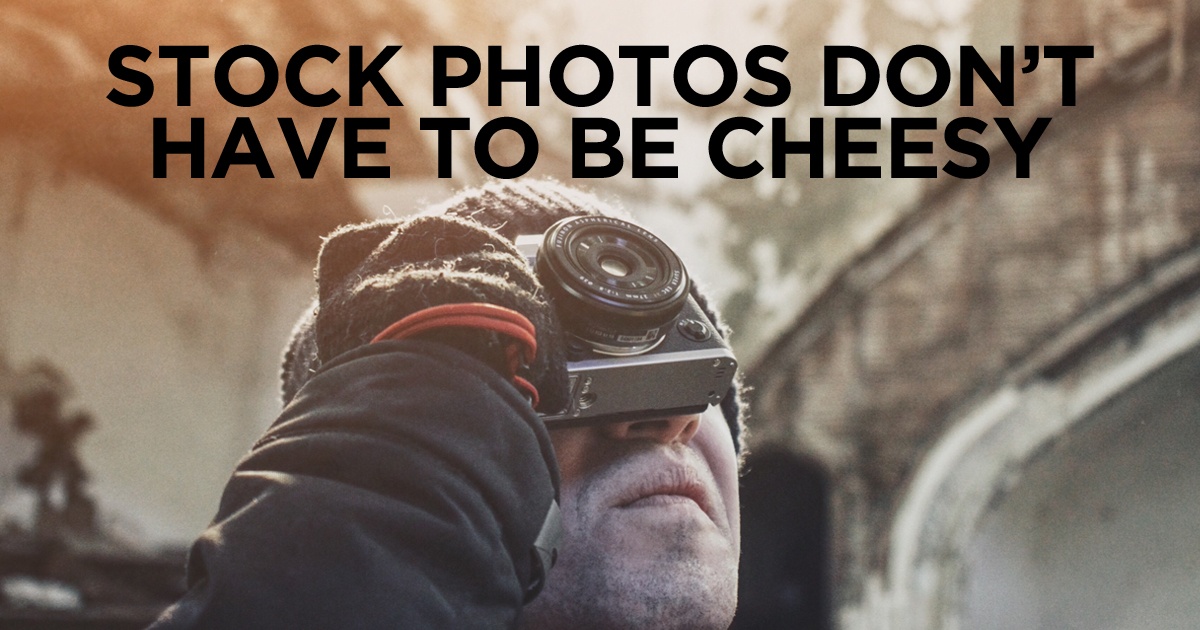
May is Photography Month, and we love photography here at Sparkfactor. This week, we’ll be publishing a series of posts based on photography. Today’s post focuses on stock photography.
The point of your website is to create an authentic connection with your audience in instances where you’re not meeting face-to-face. Nothing disrupts the authenticity of a site than ridiculous stock photos.
Stock Photography Doesn’t Have to Be Cheesy
 Vince Vaughn and company’s silly stock photo promotion for the movie Unfinished Business was a pitch perfect look at the stock photos we’ve all come to love to hate. The photoshopped images of Vince Vaughn and Dave Franco point out the absurdity of stock photography: they often look out of place and unnatural, while trying to convince the audience of the exact opposite.
Vince Vaughn and company’s silly stock photo promotion for the movie Unfinished Business was a pitch perfect look at the stock photos we’ve all come to love to hate. The photoshopped images of Vince Vaughn and Dave Franco point out the absurdity of stock photography: they often look out of place and unnatural, while trying to convince the audience of the exact opposite.
Stock photography is meant to be a way to have high-quality photography for various uses (newspaper articles, blog posts, advertisements), without the potentially high cost of paying a photographer every time a new image is needed. But the often absurd photos can do more harm than good by causing a disconnect with the audience.
 Now, however, there are sites that are geared toward realistic stock photography, making sure that cheesy, wooden photos of people in suits pretending to talk or high five aren’t in the mix. Depending on the license, you can use these photos for everything from a blog post header to a graphic call-to-action to a background on your website.
Now, however, there are sites that are geared toward realistic stock photography, making sure that cheesy, wooden photos of people in suits pretending to talk or high five aren’t in the mix. Depending on the license, you can use these photos for everything from a blog post header to a graphic call-to-action to a background on your website.
Consider the message you’re trying to convey to your audience through these images, and then search for the right photo to embody that message. A stock image shouldn’t be added to a site or other marketing material without considering how it will connect to the intended audience.
There aren’t hard and fast rules about what makes good stock photography, but you’ll know it when you see it. If your company needs to use stock photography often, it’s best to develop your own, company-wide guidelines with a brand identity package to make sure the images are being used consistently and everyone has an idea of the tone of the images that should be used.
When selecting stock photography images, be sure to know the license the photo comes with and what you can and cannot due to and with the image: some will let you modify, others are for editorial use only, and still others need to be attributed back to the original artist.
Stock Photography Cheat Sheet
If you want to learn more about stock images, take a look at the following cheat sheet from our friends at First Site Guide. The infographic explains the difference between an image bank and photo stock, details how to buy images, and gives seven tips for stock usage.

You can see more of their resources at firstsiteguide.com.
Need help figuring out your company’s stock photography policy?
We can help!
{{cta(‘d0fd596d-7894-4f61-a633-0089781092f5’)}}
